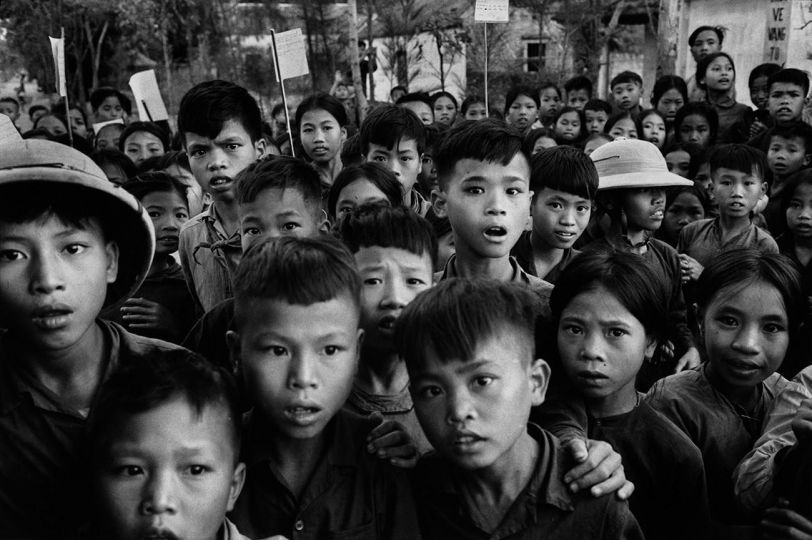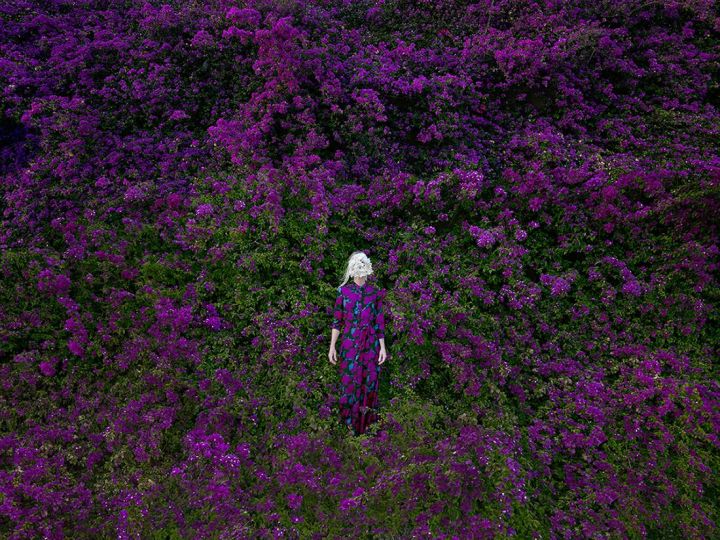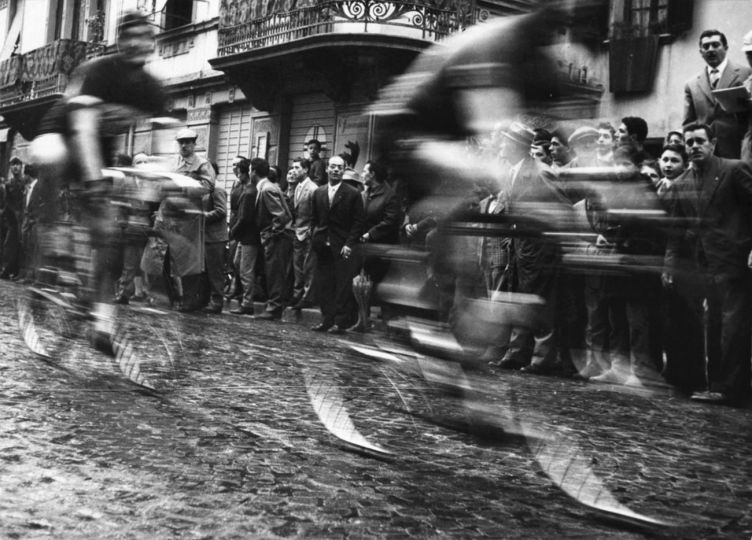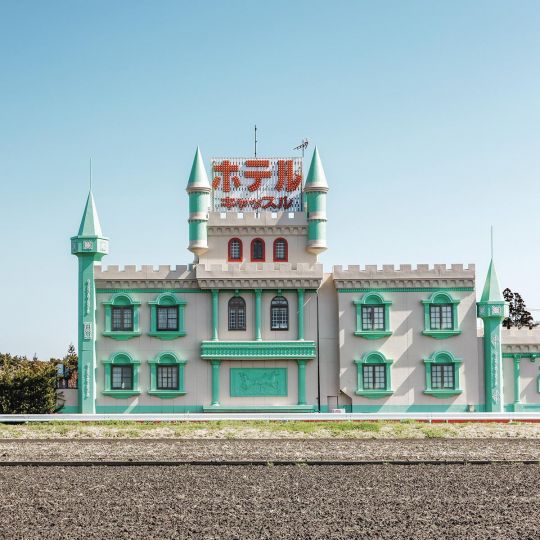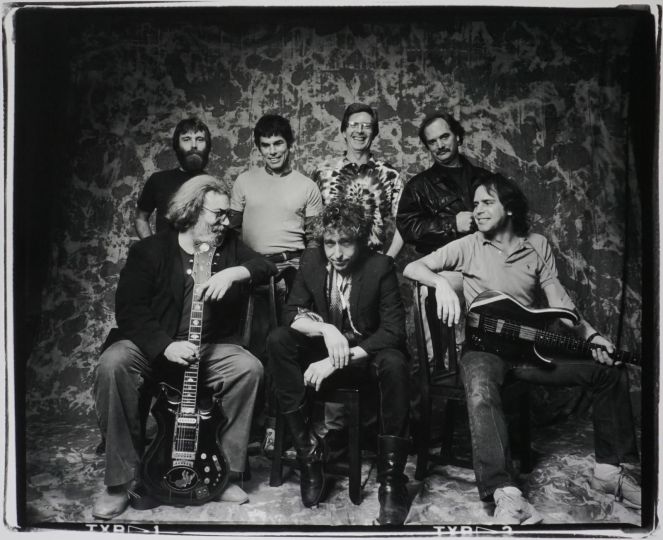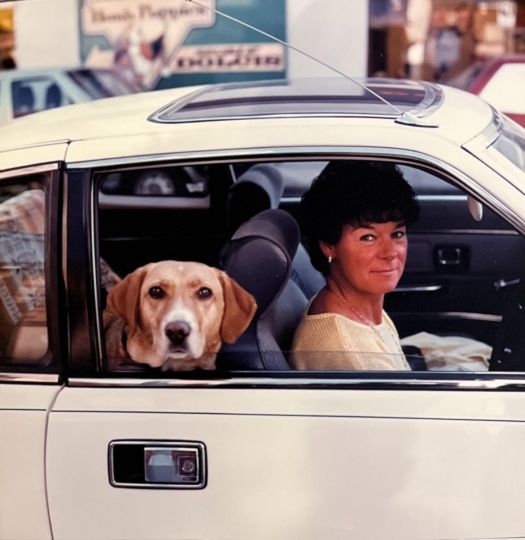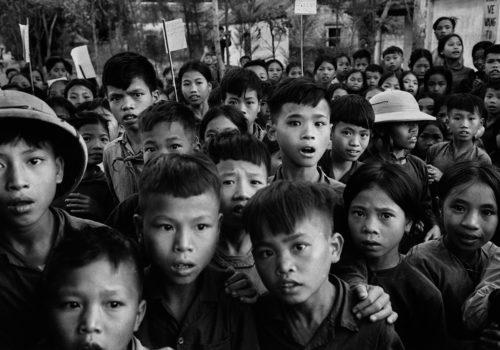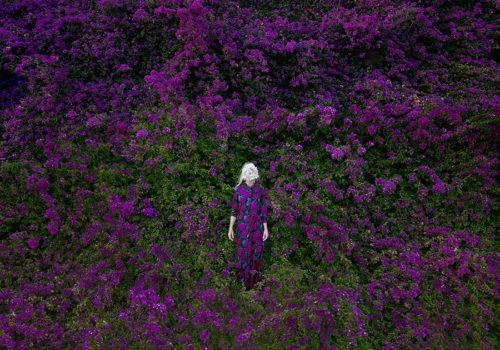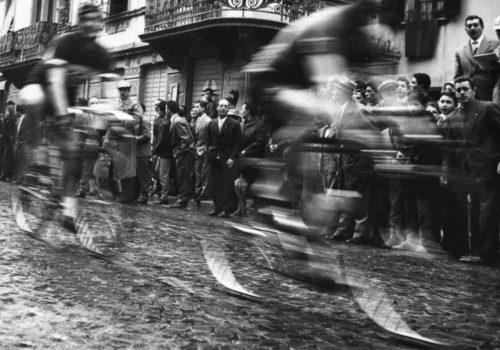Day 2
Something to celebrate this morning: for once, I paid more attention to my hat and mascara than to my photo equipment. And something else to celebrate: I am meeting with two of the Grandes Dames of fashion photography: Taki Wise and Etheleen Staley.
There’s a hushed ambiance when I arrive. Etheleen is working and Taki isn’t yet there – so I’m asked to wait. I sat in a corner, coincidentally in front of Lilian Bassman’s Barbara Mullen aboard Le Bateau Mouche, taken for a Chanel campaign in 1960. No problem, I can wait. A long time if necessary. If only I had known that Lilian Bassman would die just a few weeks later, I would have stayed there all afternoon. Suddenly Taki walks in. She hands me a folder containing 27 years of invitations to the StaleyWise Gallery. It’s an absolute treasure. I start rifling through in the hopes of finding the very first invitation, Horst, Light and shadows. This is the image I decide to use with my portrait of these two women. I sit in a green velvet chair, Taki stands to my left and Etheleen sits at my right. The verbal jousting begins, one recounting a memory, the other finishing it. They fill in each other’s blanks. And 35 years of international fashion unfolds before my eyes.
A discovery: Taki tells me how photo paper increased in value after it disappeared from the market. She explains that at the time, picture and print quality alone were important. No one ever imagined that photo paper itself would eventually disappear. She adds that not long ago, photographers sometimes printed dozens of versions of the same picture, often without numbering them – which explains how difficult it can be to determine contemporary market value for that particular period of photographic history.
A very funny moment: during the shoot, Taki admits that having her picture taken is one of her worst nightmares. I reassure her, inundate her with words. I try to hurry up, but something isn’t working. I turn around to see that the entire gallery staff was behind me, watching something they’d never seen before. We all broke out laughing. And a little something to savor at the end: while putting away my material, Taki and Etheleen look again through their folder of treasures. Some things make them whisper and some make them shout—but mostly, they’re laughing. Discreetly, I brush up against them to get a last taste of those past years and gather a few secrets… to keep for myself. When I climb into the taxi, it’s with an ear-to-ear grin, a stiff neck, and a light heart. Glamour, check. Thank you, Taki and Etheleen.
How did they get started?
They met at the ad agency Grey.
Soon after, former Magnum photographers Mary Ellen Mark, Joan Liftin, Charles Harbutt and Abygail Haymon founded their own agency, called Archive, in a Wooster Street office. They offered part of their space to Taki and Etheleen for their first exhibition: Horst, Shadow and Light.
During the following years, they remained faithful to their initial instinct—a radical decision, more controversial then it may seem today, to introduce fashion photography into the art world.
Their argument was always very simple: even if fashion photography was primarily a commercial venture, the best examples, like all other images, could attain the status of fine art.
They began by working with photographers who didn’t have the credibility they do now, offering either to represent them or to present their work in an exhibition. Over thirty years, some of the finest names have appeared on their invitations: Baron de Meyer, Erwin Blumenfeld, Louise Dahl-Wolfe, George Hoyningen-Huene, Horst, Lartigue, Helmut Newton, Man Ray, Steichen, David LaChapelle, Patrick Demarchelier and Michael Dweck.
Both of them pointed out how important Dan Wise, Taki’s husband, had been to the gallery. He supported them along the way, helping them build their own identity to become who they are today.
Their best memory as gallerists…
Etheleen tells me she doesn’t remember a specific moment, but rather a marvelous journey over the years.
Taki tells me about their first opening on Wooster Street: a giant print of the artist’s name and a series of 11×14 prints (27x35cm) taken especially for the occasion.
Given the circumstances, they had no idea how the exhibit would turn out. She tells me that at least 400 people showed up. All of the industry was there, even Irving and Lisa Penn. She laughs, thinking about the coat hanger that fell over from the weight of the coats that opening night.
Etheleen adds that the success was totally unexpected: they ended up on the cover of the Arts & Leisure section of the Sunday Times that weekend.
Their worst memory as gallerists…
It came during a Herb Ritts exhibition in 1985.
They explain how he was so famous that they decided to hold two different receptions, separating their lists in half, which ended up making everyone mad. On the second night, few people showed up and they realized with horror that the Halloween parade was passing in front of their door and that it would be nearly impossible to enter the gallery.
On their bedroom wall…
Etheleen and her husband collect of pre-Raphaelite works; she doesn’t have any photographs in her home and never bought any. Well, actually, there is a Cartier-Bresson in her kitchen and a Herb Ritts in her husband’s office. The others are in boxes, but she insisted: she plans on hanging them soon!
Taki lives with pictures by Lartigue, Herb Ritts, and Kertesz. In her bedroom she has several drawings, along with a picture taken during a trip to Cambodia, and a picture by Erwin Blumenfeld in her bathroom.
If she was a reknowned photographer…
Etheleen chooses Avedon—the most handsome photographer with the greatest life.
Taki things about it for a while and finally decides: Lartigue.

